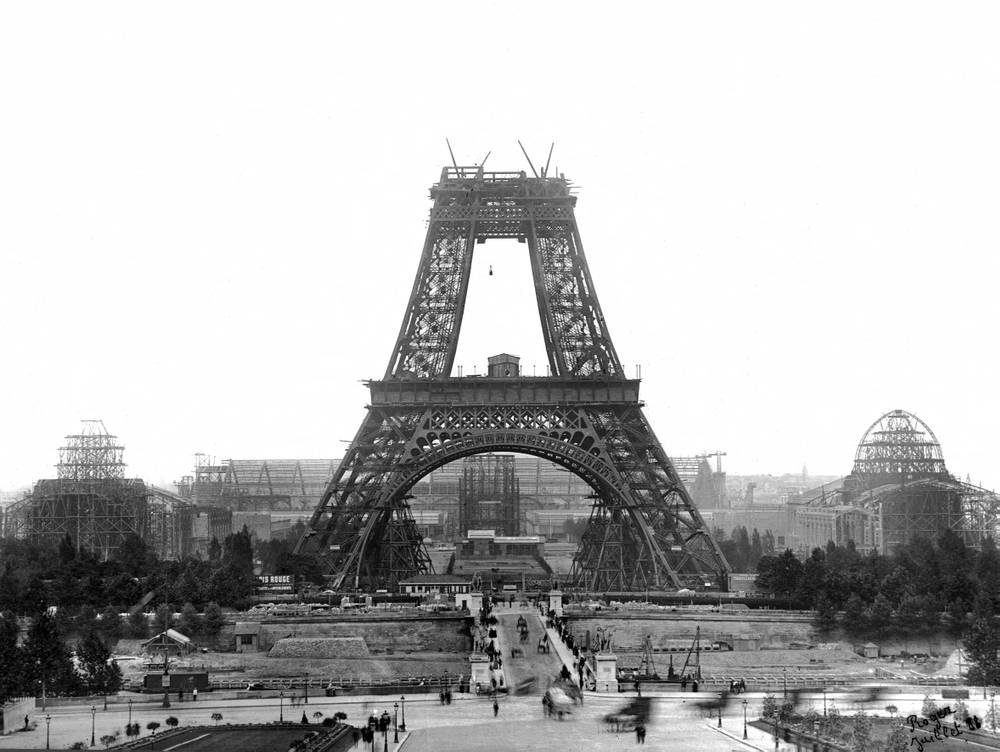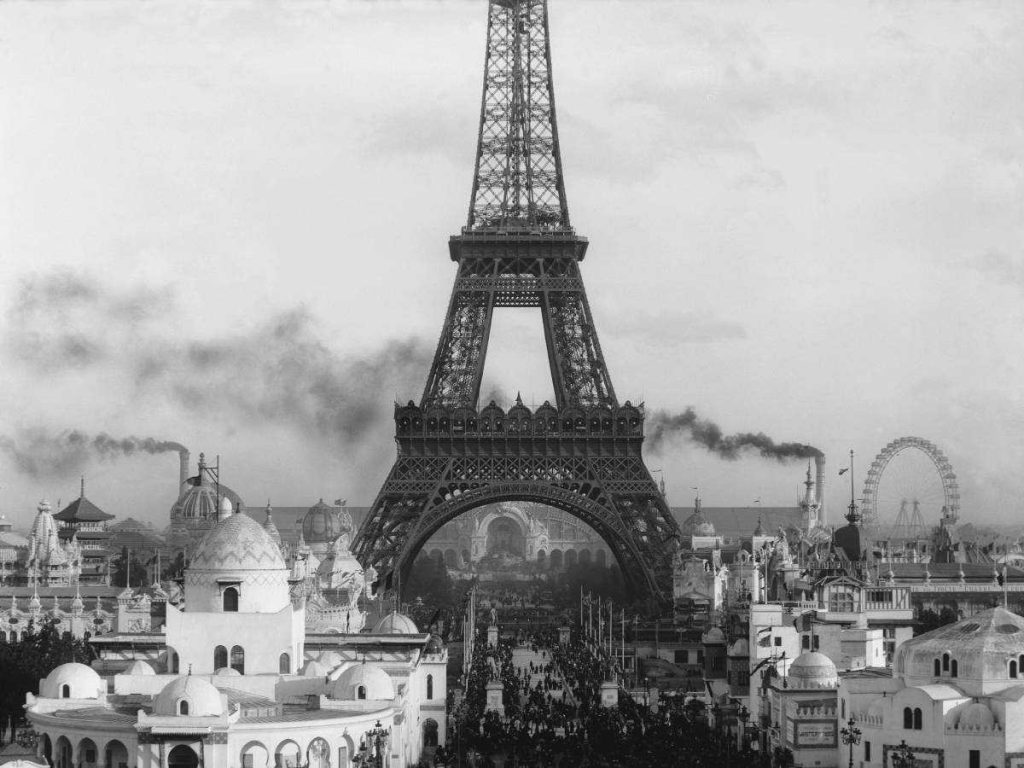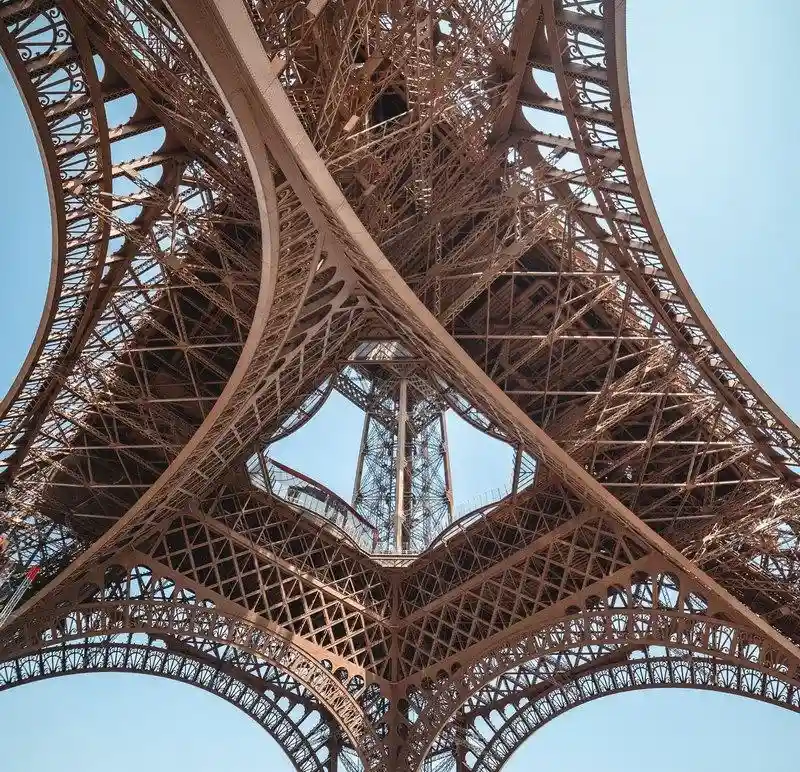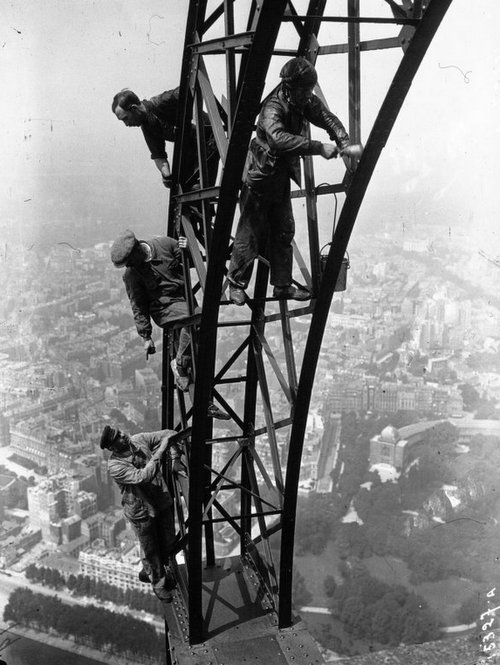Beginning 100
The works for the Eiffel Tower began on January 1887, and the actual construction of the Eiffel Tower began on July 1, 1887 for the assembly of the supports, and was completed two months later, in September. Every piece of Eiffel Tower was made in Eiffel’s factory located at Levallois-Perret on the outskirts of Paris. Every one of the 18,000 pieces used to build the Tower were specially designed and calculated, with an accuracy of a tenth of a millimeter and then assembled to form new pieces around five meters each. All the metal pieces were held together by rivets.
During the Construction of the Eiffel Tower
During the construction of the Eiffel Tower, the uprights were placed on concrete foundations installed a couple of meters below-level on top of a layer of compacted gravel. Each corner rests on its own block support, applying a pressure of approximately 3 to 4 kilograms per square centimetre, and at the same time, each block is joined to the others by walls. The Eiffel Tower was assembled using wooden scaffolding and small steam cranes that were mounted onto the tower itself. The first level was completed thanks to the use of twelve temporary wooden scaffolds, that were 30 metershigh, and four larger scaffolds of 40 meterseach. On December 1887, the joining of the major girders up to the first level was completed.


Project completed
The Eiffel Tower is considered to be completed in record time, considering the time period during which it was built. From the initial digging in July 1, 1887 until March 31, 1889, it took 2 years to complete a metal structure, over 300 meters, the tallest one in the moment.
Considering the rudimentary means available at that period. The construction and assembly of the Tower was a marvel of accuracy, as all chroniclers of that period agree. During a ceremony in the narrow platform at the top, Eiffel received his decoration from the Legion of Honour for completing a project of this magnitude.
What materials were used to build the Eiffel Tower?
In 1889, there were limited options to build large building structures, and the materials used were one of them. Wood was out of the question, stone would have made it collapse under its own weight, and reinforced concrete was still at a very early stage. There were also iron and steel available, but Eiffel preferred to work with iron to make the Eiffel Tower come to life. Why? Because he had used it his entire life. Iron is more resistant thanks to a more controlled manufacturing process. The other materials involved were rivets, paints, lifts, and of course all the man-power required to build it.


Painting the Tower
Conservation and preservation of monuments is key for the lifespan over time. The repainting of the Eiffel Tower has a history of its own. The Eiffel Tower has been painted 18 times since its construction, an average of once every 7 years. Gustave Eiffel in his book “The 300 Meter Tower” emphasized on the importance of the Tower, and even though we would never fully realize how essential it is, that it was vital to the conservation of metal works, and the more meticulous the paint job, the longer the Tower would endure. It has changed several times in color, going from red-brown to yellow-ochre, followed by chestnut-brown, and then to the bronze of today. The many coats of paint the Tower has been through help to protect the puddle iron from oxidation, to ensure its longevity.
